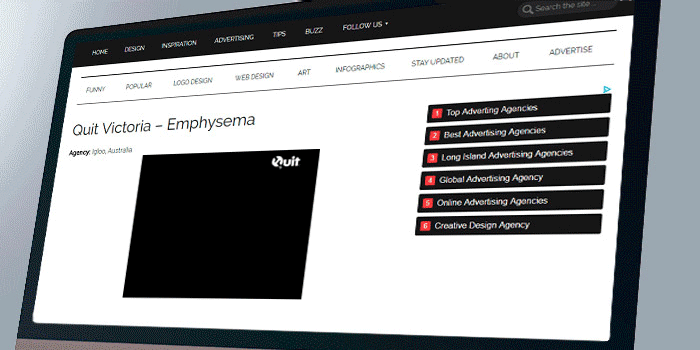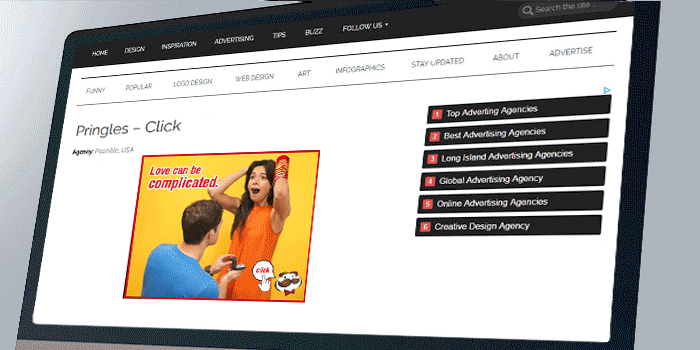Have you read Steven Pressfield’s No One Wants to Read Your Sh!t? At first glance, it’s geared toward writers. But Pressfield spent several years in advertising before going on to write award-winning screenplays, fiction and nonfiction bestsellers. His book is a gold-mine for aspiring and established ad folks.
The core of his philosophy, adapted for display advertising and HTML5 ads:
Consumers aren’t scrolling, looking for your ad. They don’t want to see your ads. In fact, no one does.
“Yeah, yeah, yeah,” you’re probably thinking. “I know that.”
Do you really?
Consumers are tuning out from ads more than ever before. We’ve referred to countless studies in previous posts showing that ad blocker use is on the rise.
While your agency or brand may be the exception, bad ads have become the norm. And to solve the problem, everyone in the industry must take notice and action.
Digitaland – What’s been done so far
Just like an AA meeting, the first step to solving a problem is admitting you have one.
And the advertising industry is finally coming to terms with a landscape littered with bad ads. During his speech at the 2017 IAB Annual Leadership coaching Meeting, Marc Pritchard, Chief Brand Office for P&G, spoke of his brand’s new focus on accountability and craft in their advertising efforts.
With a big brand like P&G leading the charge for change, we can expect to see some big shifts in industry standards and practices. The draft IAB guidelines indicate that pop-up ads may be completely dropped from their list of ad standards.
Another big win for the digital display industry was ushered in earlier this year, when Flash-based ads were officially forced out by HTML5 ads, due to security vulnerabilities.
While the switch initially led to more work for brands and agencies as they scrambled to find a HTML5 savvy digital production agency, the payoff has been worth it. HTML5 ads are more secure and have more robust cross-screen and creative capabilities. (Still not sure how to manage your HTML5 banner ad projects effectively? Check out our new guide.)
Start with this question
Pressfield says, “When you understand that nobody wants to read your shit, your mind becomes powerfully concentrated.”
One of the best questions to ask when deciding on a campaign or piece of creative: Is this interesting?
You may already be asking this question in your brainstorming session, but whose point of view are you considering? As creatives, it’s easy to get carried away with all the things we could do because it would be so cool.
Sometimes, we forget to look at things through the lens of our audience. What would be interesting and relevant to them?
What does your target audience care about?
Interesting can mean many things to many people. It could be an ad that’s challenging, like a game ad or messaging that directly challenges a common assumption or pain point.
It could be something that’s inventive, either in concept or technology. A campaign developed with a new technology like virtual reality or 360 ads, or an unusual concept like Quit built out for its PSA about emphysema. The initial creative is simple but it challenges the viewer and builds curiosity: how could you simulate emphysema via a banner ad?
Make your HTML5 ads useful
How do you keep the “coolness” of a campaign from overshadowing your messaging?
Every time you vet part of your campaign with “Is this interesting?” you want to follow it up with “Is this useful?”
Shock and awe campaigns, gimmicks, loud competing colors, overly witty calls to action – consumers see through those in an instant (or get confused) and run the other way. Just because (almost) anything is possible with HTML5 ad technology, doesn’t mean you should build everything into one campaign.
Make your HTML5 ads irresistible
You’ve heard of WIIFM? It’s the most powerful channel on the plant: What’s In It For Me?
The best way to build an irresistible piece of creative is to answer that question and answer it well.
And accomplishing that is one of the hardest parts of the creative process.
Pringles does a masterful job of answering this question with a quirky banner ad that includes an astounding 97 clicks. The WIIFM payoff? The viewer is entertained and identifies with the humorous real-talk. (“Are you bored?” “Because you keep clicking this.” “BTW, thanks for trusting our banner not to send you to a porn site.”)
The reason the quirky conversation works is because it starts a story. Each click builds trust. The story acknowledges legitimate consumer concerns (being sent to a spammy site) while continuing with the light-hearted banter. It’s like a messaging exchange you might have with a close friend.
Put the magic back
These are simple truths we all know on some level. But, just because they’re simple doesn’t always mean they’re easy to put into practice. The lure of shiny objects – i.e. new technologies, overly clever copy, targeting capabilities, etc. – sometimes distracts us from building quality creative for our ads.
Let’s put the magic back into advertising by putting the consumer and creative first. contact Digitaland for HTML5 ads Projects.








